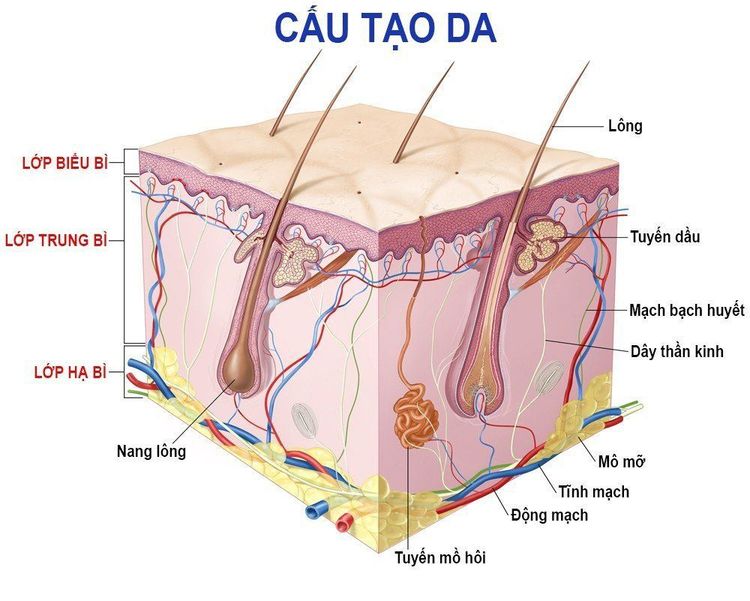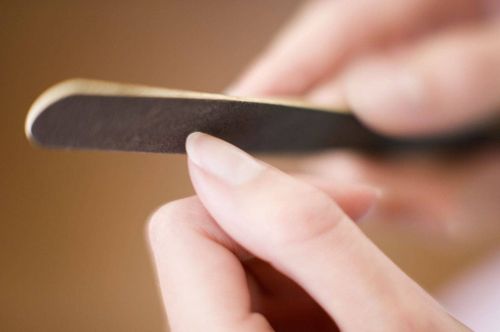This is an automatically translated article.
The layers of the skin are responsible for protecting the internal organs, regulating body temperature, preventing water loss and maintaining the necessary moisture. In particular, a healthy skin and no problems will make us feel more comfortable and confident.
1. How many layers does the skin have?
The order of the layers of the skin from the outside to the inside is as follows:
The epidermis The epidermis is the outermost layer of skin that we can see and touch, they have a protective effect on the body, avoiding bacteria invasion from the outside environment. The epidermis is covered with water and lipids (emulsions). This hydrolipid film has the effect of maintaining sweat and sebum secretion to keep the skin soft, against bacteria and fungi from the outside.
In the epidermis there are 5 layers of cells, they grow and change regularly, also known as keratinization, so each layer of the epidermis is different. Specifically: The basal layer is the innermost layer of the epidermis, where keratinocytes are produced; layer of squamous cells has the effect of producing keratin; the granular layer is where the process of keratinization begins, the cells produce small granules, which move upward, transforming into keratin and epidermal lipids; the glossy layer is gently pressed by the cells, making them flat and indistinguishable; The stratum corneum is home to sweat and sebum glands, which are bound by epidermal lipids, creating a barrier to protect and help keep the skin healthy.
Dermis (layer of connective tissue) Thick, elastic dermis, located between the epidermis and the subcutaneous tissue. The main structures that make up the dermis are collagen fibers, elastic and connective tissues, which help keep the skin healthy and flexible. These structures are tightly bound to a gel-like substance (containing hyaluronic acid), which is highly effective in binding with water molecules to help maintain the skin's volume.
The dermis consists of the basal layer and mesh, they help reduce external influences and heal wounds, help nourish the epidermis, remove waste.
Subcutaneous tissue As one of the layers of the skin, subcutaneous tissue is the innermost component, which has the function of generating energy in the body, acting as a cushion to insulate heat. The subcutaneous tissue layer consists of fat (bound together as a protective cushion); collagen fibers (which hold fat cells together) and blood vessels. However, the number of fat cells of the subcutaneous tissue varies in different areas of the body.

Các lớp của da giúp điều chỉnh thân nhiệt cũng như tiếp nhận cảm giác.
2. Function of the layers of the skin
Regulate body temperature When the temperature is high, the layers of the skin appear sweat to help cool the body and shrink the vascular system in the dermis to retain heat.
Sensory Reception The skin is receptive to sensations, making us aware of heat, cold, pain, pressure, and touch. This sensation is detected by nerves in the dermis. Thanks to the sensory function, the body adapts to the external environment and avoids negative effects from external factors.
However, with excessive damage to the skin can affect sensory function. For example, a 1st and 2nd degree mild burn will be very painful, but with a 3rd degree, the skin will lose sensation because the nerves have been destroyed.
Skin regeneration In addition to the above functions, the skin also has the ability to heal wounds.
Food source Fat cells in the subcutaneous tissue provide important nutrients. When the body needs them, these substances will be moved to the blood vessels and taken to where they are needed.
In addition, the skin also plays an important role in psychological problems. Skin condition affects how we and others feel about ourselves. When the skin is healthy and there are no problems, it makes us feel more comfortable and confident.
Please dial HOTLINE for more information or register for an appointment HERE. Download MyVinmec app to make appointments faster and to manage your bookings easily.













